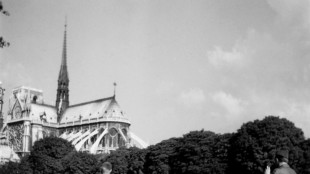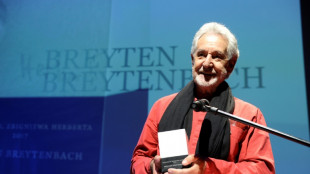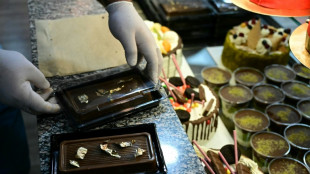

Be gone, winter! Young Slovenians reclaim sheepskin monster parade
Clad in a shaggy sheepskin costume, Denis Kokot is among a young generation of Kurenti performers who descend on the northeastern Slovenian town of Ptuj every February to chase away winter.
Dating back to the 18th century, the tradition believed to be of pagan origin and practised over 10 days until Ash Wednesday has stood the test of time.
Young Slovenians like Kokot, who have learnt the custom "from the cradle", even leave their smartphones behind to take part in the parade, which marks the end of winter and the coming of a fertile spring.
"During this time you switch off from all the social networks and simply enjoy it," the 22-year-old told AFP.
"My father was a Kurent performer too, and the most exciting thing is when you see children's eyes staring at you," he said, using the singular version of the word.
As the ear-deafening sound of clanging cowbells fills the air, hundreds of Kurenti dressed in white and black sheepskin and donning colourful feathered and horned masks parade through Ptuj.
"You simply submerge yourself into this mystical feeling," said 37-year-old shopkeeper and performer Monja Hvalec.
Interest has picked up as whole families are nowadays able to partake in a rite once exclusively reserved for unmarried men.
"We inherited the tradition from our parents and once we get our own children, we pass it on to them," said Ales Ivancic, head of the Kurenti association, which oversees 25 groups from neighbouring villages.
"It's a bridge between the past and the future," he added.
- 'Suffer to bring luck' -
These days, the vibrant annual "monster" parade in February called Kurentovanje draws thousands of visitors from Slovenia and abroad.
Originally each village in the area had its own group of Kurenti -- mostly bachelors, who wore "masks and symbols peculiar to their hamlet", explained Ptuj museum ethnologist Andrej Brence.
The burly Kurenti made "door-to-door visits believed to bring luck to those who welcomed them," he added.
A few decades ago, the local tradition was at risk of vanishing until various Kurenti groups from northeastern Slovenia in the late 1950s decided to join forces and allow women and children.
Their efforts were rewarded and in 2017 the tradition was inscribed by UNESCO as Intangible Cultural Heritage.
Once made from leftover materials found on local farms that were subsequently recycled, today's costumes have become sophisticated objects of prestige and can cost up to 1,600 euros (around $1,720).
The annual celebration continues to attract more and more visitors, with some 100,000 people attending Ptuj's 10-day-carnival, according to the tourist office.
But entertaining the frenzied crowd is hard work as dancing and flaunting in a costume that weighs more than 30 kilograms (66 pounds) is physically challenging.
"You need to suffer to bring good luck," another Kurent quipped behind his mask.
J.Fletcher--NG



